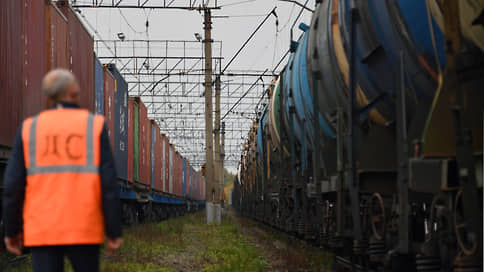Companies are developing railcar leasing on retail terms
[ad_1]

Lessors expect a slowdown in growth rates in one of the largest segments—car leasing. This is due to high rates and increased prices, tariffs, etc. Against this background, companies are looking for new operating mechanisms, developing leasing of wagons on retail terms. This can situationally solve the problem of shortages and make it easier for small shippers to enter the market. However, the risks of a retail approach to this segment remain high, market participants warn.
At the end of 2023 and in 2024, leasing companies surveyed by Kommersant expect a slowdown in growth rates in the railcar leasing segment. The reasons for the negative dynamics are the persistence of a double-digit key rate, at which, without increasing the advance payment, the leasing payment ceases to be covered by the operating profitability, explains Maxim Kalinkin, CEO of the Gazprombank Leasing group. A new car does not pay for itself over the term of the leasing agreement – 10-15 years, as noted by State Transport Leasing Company. “Development in the segment is hampered by high prices for wagons and repairs, high financing rates, rising tariffs, including for empty runs, as well as restrictions on the railway infrastructure,” Olga Kirillova, director of the corporate business department at Sberbank Leasing, lists the risks.
According to Expert RA, the share of railway equipment leasing in the portfolio of leasing companies as of July 1, 2023 was 26%, exceeding the indicators of other segments. In the first half of 2023, the volume of new business in this segment reached 238 billion rubles, which is more than double last year’s figure. According to State Transport Leasing Company, average prices for new cars over the nine months of 2023 increased by 30–40%.
Against this background, leasing companies are looking for new operating mechanisms that will ensure the demand of lessees and maintain profitability. Sberbank Leasing launched a project for express leasing of railcars in mid-October. The company offers the opportunity to conclude contracts on essentially retail terms: zero advance, transaction amount up to 400 million rubles. (up to 200 cars), period up to seven years. Sberbank Leasing notes the greatest interest in the product from rolling stock operators and cargo owners. Now leasing railway equipment makes up 23% of the company’s portfolio and 10% of new business for the nine months of 2023, Olga Kirillova points out.
Experts note that retail turnover of railcars potentially increases the density of use of transportation capacity.
Of course, for SMEs the cost of wagons is very high, and Russian Railways traditionally gives priority to route shipments, which automatically worsens the economy of small wagon owners, admits Sergei Grishunin, managing director of the NRA rating service. “However, traditional players in the bulk cargo transportation market may try to enter the market for transportation of fish products by refrigerated wagons or refrigerated containers from the Far East to Central Russia. Entering this market with a large volume at once is risky, but taking several cars or platforms to hone logistics is a completely sound idea,” he is confident. In addition, increased wear and tear of cars leads to their retirement, and “the ability to quickly replace the emergency fleet will be appropriate for large players,” the expert believes.
238 billion rubles
reached the volume of new railway equipment leasing business in the first half of the year.
Other major market participants confirm the increased interest on the part of SME companies in this segment, but are in no hurry to adapt retail scoring and leasing mechanisms to railcars. In current market conditions, clients have to increase the down payment and the balloon (residual payment) at the end of the term to ensure a comfortable monthly payment, and not all lessees from the retail segment are ready to work on new conditions, GPB Leasing admits. In addition, at current financing rates and current prices for railcars, a leasing transaction with them will not pay off even in the traditional 15 years for corporate transactions, let alone in the proposed seven years. “The railcar leasing segment still remains a significant corporate segment,” states the State Transport Leasing Company. And the main market participants are interested in transactions amounting to hundreds and thousands of cars.
In addition, in such transactions, risks for lessors increase. The cars do not always reach experienced operators, and this is fraught with damage to the fleet, underutilization and loss of revenue, and therefore with risks in paying leasing payments, explains Sergei Grishunin. In addition, large lots of cars are easier to sell, since there is usually a clear cargo base for them, so in the event of bankruptcy of a lessee with a small number of cars, it will take longer to sell them, the expert points out.
[ad_2]
Source link





